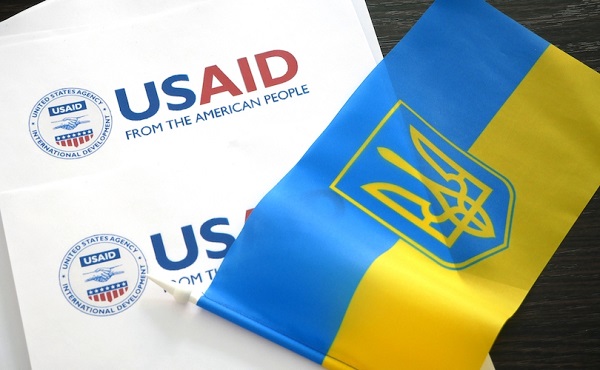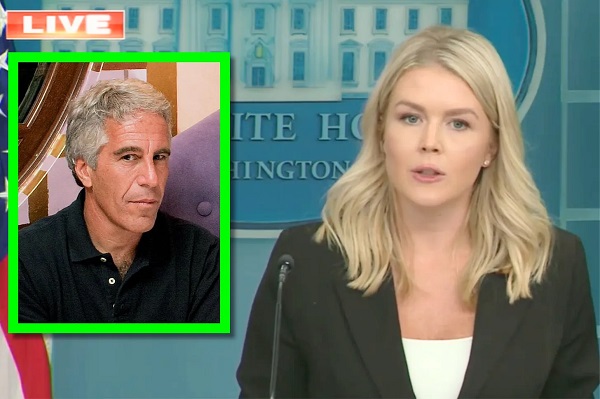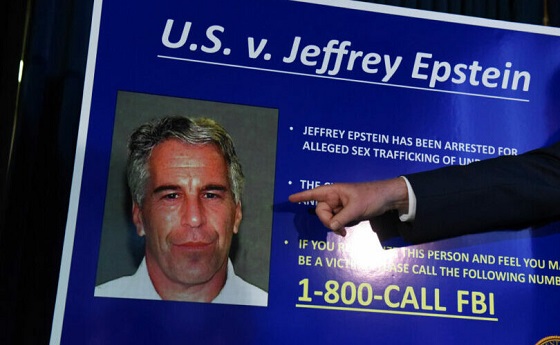Business
90% of Ukraine news outlets get funding from USAID: new report

From LifeSiteNews
By Matt Lamb
USAID, targeted by Elon Musk and Donald Trump for cuts, is a heavy funder of news outlets in Ukraine, according to a new report. The agency has come under scrutiny for wasteful and ideological projects.
The United States Aid for International Development (USAID) provides funds to 90 percent of Ukrainian news outlets, according to a new report from the Columbia Journalism Review and Reporters Without Borders.
While much focus has been on USAID and other federal entities subscribing to news outlets such as Politico, a broader issue may be taxpayers paying for news coverage in foreign countries.
Working off data from Reporters Without Borders, the Columbia Journalism Review reported that “USAID had boasted of supporting more than six thousand journalists, around seven hundred independent newsrooms, and nearly three hundred media-focused civil society groups in thirty or so countries.”
The Trump administration reportedly froze $268 million for these endeavors.
“RSF also noted the harsh effect on journalism in Ukraine, where 90 percent of news organizations rely on USAID funding, some very heavily,” the Journalism Review reported.
The United States has spent nearly $66 billion on direct military assistance to Ukraine in its ongoing war against Russia. Taxpayers have sent another $120 billion or so to the country in other foreign aid, according to an inspector general report current as of September 30, 2024.
The journalism groups released the reports ostensibly to defend U.S. funding of outlets.
On a related issue, the Trump administration is also cutting off taxpayer-funded subscriptions that government employees set up with news outlets.
“I can confirm that the more than $8 million taxpayer dollars that have gone to essentially subsidizing subscriptions to Politico on the American taxpayers’ dime will no longer be happening,” White House Press Secretary Karoline Leavitt said during a press conference yesterday.
Politico itself had not received $8 million in subscriptions, but the press secretary, who said she learned of the issue right before the briefing, was referring to outlets in general.
“The DOGE team is working on canceling those payments now,” she said.
She stated further:
Again, this is a whole-of-government effort to ensure that we are going line by line when it comes to the federal government’s books. And this president and his team are making decisions across the board on ‘Do these receipts serve the interests of the American people? Is this a good use of the American taxpayers’ money? If it is not, that funding will no longer be sent abroad and American taxpayers will be seeing significant savings because of that effort.
Conservatives celebrated the news.
“The Federal Government is not a good steward of your tax dollars,” Josh Tanner, an Idaho state representative, wrote on X. “They spent $8 Million on propaganda media. This is even more of a reason for Idaho tax dollars to be accounted for, applied appropriately, and reduced where necessary. The Fed has failed, our state must succeed.”
“Even if the govt money to Politico wasn’t an outright grant, providing $8 Million in taxpayers funds for ‘subscriptions’ to a super Lefty publication is just absurd and abusive to hard-working Americans!” conservative commentator Steve Cortes wrote.
A payroll issue with Politico‘s payroll was initially blamed on the funding freeze, though the company said it was a “technical error” that created the problem.
USAID under scrutiny, uses tax dollars to promote DEI around the world
The Trump administration has closed, at least temporarily, USAID. Secretary of State Marco Rubio is now the administrator of the agency, which has funded a variety of ideological projects across the globe.
“USAID has a history of ignoring [the national interest of the United States] and deciding that they’re a global charity. These are not donor dollars, these are taxpayer dollars,” Secretary Rubio said recently.
Leavitt highlighted some of the ideological and wasteful projects funded through this agency, including “$1.5 million to advance DEI in Serbia’s workforce.”
The agency has also been used to pressure conservative, poorer countries into adopting pro-abortion policies, as LifeSiteNews previously reported.
State Department spokeswoman Tammy Bruce highlighted other wasteful projects in a post on X.
She listed projects the freeze had stopped, including “$16 million in unjustified funding for institutional contractors in the gender development offices,” “$4 million to unjustified funding for the Center for Climate-Positive Development,” and “$600,000 to fund technical assistance for family planning in Latin America.”
Automotive
Federal government should swiftly axe foolish EV mandate

From the Fraser Institute
Two recent events exemplify the fundamental irrationality that is Canada’s electric vehicle (EV) policy.
First, the Carney government re-committed to Justin Trudeau’s EV transition mandate that by 2035 all (that’s 100 per cent) of new car sales in Canada consist of “zero emission vehicles” including battery EVs, plug-in hybrid EVs and fuel-cell powered vehicles (which are virtually non-existent in today’s market). This policy has been a foolish idea since inception. The mass of car-buyers in Canada showed little desire to buy them in 2022, when the government announced the plan, and they still don’t want them.
Second, President Trump’s “Big Beautiful” budget bill has slashed taxpayer subsidies for buying new and used EVs, ended federal support for EV charging stations, and limited the ability of states to use fuel standards to force EVs onto the sales lot. Of course, Canada should not craft policy to simply match U.S. policy, but in light of policy changes south of the border Canadian policymakers would be wise to give their own EV policies a rethink.
And in this case, a rethink—that is, scrapping Ottawa’s mandate—would only benefit most Canadians. Indeed, most Canadians disapprove of the mandate; most do not want to buy EVs; most can’t afford to buy EVs (which are more expensive than traditional internal combustion vehicles and more expensive to insure and repair); and if they do manage to swing the cost of an EV, most will likely find it difficult to find public charging stations.
Also, consider this. Globally, the mining sector likely lacks the ability to keep up with the supply of metals needed to produce EVs and satisfy government mandates like we have in Canada, potentially further driving up production costs and ultimately sticker prices.
Finally, if you’re worried about losing the climate and environmental benefits of an EV transition, you should, well, not worry that much. The benefits of vehicle electrification for climate/environmental risk reduction have been oversold. In some circumstances EVs can help reduce GHG emissions—in others, they can make them worse. It depends on the fuel used to generate electricity used to charge them. And EVs have environmental negatives of their own—their fancy tires cause a lot of fine particulate pollution, one of the more harmful types of air pollution that can affect our health. And when they burst into flames (which they do with disturbing regularity) they spew toxic metals and plastics into the air with abandon.
So, to sum up in point form. Prime Minister Carney’s government has re-upped its commitment to the Trudeau-era 2035 EV mandate even while Canadians have shown for years that most don’t want to buy them. EVs don’t provide meaningful environmental benefits. They represent the worst of public policy (picking winning or losing technologies in mass markets). They are unjust (tax-robbing people who can’t afford them to subsidize those who can). And taxpayer-funded “investments” in EVs and EV-battery technology will likely be wasted in light of the diminishing U.S. market for Canadian EV tech.
If ever there was a policy so justifiably axed on its failed merits, it’s Ottawa’s EV mandate. Hopefully, the pragmatists we’ve heard much about since Carney’s election victory will acknowledge EV reality.
Business
Prime minister can make good on campaign promise by reforming Canada Health Act

From the Fraser Institute
While running for the job of leading the country, Prime Minister Carney promised to defend the Canada Health Act (CHA) and build a health-care system Canadians can be proud of. Unfortunately, to have any hope of accomplishing the latter promise, he must break the former and reform the CHA.
As long as Ottawa upholds and maintains the CHA in its current form, Canadians will not have a timely, accessible and high-quality universal health-care system they can be proud of.
Consider for a moment the remarkably poor state of health care in Canada today. According to international comparisons of universal health-care systems, Canadians endure some of the lowest access to physicians, medical technologies and hospital beds in the developed world, and wait in queues for health care that routinely rank among the longest in the developed world. This is all happening despite Canadians paying for one of the developed world’s most expensive universal-access health-care systems.
None of this is new. Canada’s poor ranking in the availability of services—despite high spending—reaches back at least two decades. And wait times for health care have nearly tripled since the early 1990s. Back then, in 1993, Canadians could expect to wait 9.3 weeks for medical treatment after GP referral compared to 30 weeks in 2024.
But fortunately, we can find the solutions to our health-care woes in other countries such as Germany, Switzerland, the Netherlands and Australia, which all provide more timely access to quality universal care. Every one of these countries requires patient cost-sharing for physician and hospital services, and allows private competition in the delivery of universally accessible services with money following patients to hospitals and surgical clinics. And all these countries allow private purchases of health care, as this reduces the burden on the publicly-funded system and creates a valuable pressure valve for it.
And this brings us back to the CHA, which contains the federal government’s requirements for provincial policymaking. To receive their full federal cash transfers for health care from Ottawa (totalling nearly $55 billion in 2025/26) provinces must abide by CHA rules and regulations.
And therein lies the rub—the CHA expressly disallows requiring patients to share the cost of treatment while the CHA’s often vaguely defined terms and conditions have been used by federal governments to discourage a larger role for the private sector in the delivery of health-care services.
Clearly, it’s time for Ottawa’s approach to reflect a more contemporary understanding of how to structure a truly world-class universal health-care system.
Prime Minister Carney can begin by learning from the federal government’s own welfare reforms in the 1990s, which reduced federal transfers and allowed provinces more flexibility with policymaking. The resulting period of provincial policy innovation reduced welfare dependency and government spending on social assistance (i.e. savings for taxpayers). When Ottawa stepped back and allowed the provinces to vary policy to their unique circumstances, Canadians got improved outcomes for fewer dollars.
We need that same approach for health care today, and it begins with the federal government reforming the CHA to expressly allow provinces the ability to explore alternate policy approaches, while maintaining the foundational principles of universality.
Next, the Carney government should either hold cash transfers for health care constant (in nominal terms), reduce them or eliminate them entirely with a concordant reduction in federal taxes. By reducing (or eliminating) the pool of cash tied to the strings of the CHA, provinces would have greater freedom to pursue reform policies they consider to be in the best interests of their residents without federal intervention.
After more than four decades of effectively mandating failing health policy, it’s high time to remove ambiguity and minimize uncertainty—and the potential for politically motivated interpretations—in the CHA. If Prime Minister Carney wants Canadians to finally have a world-class health-care system then can be proud of, he should allow the provinces to choose their own set of universal health-care policies. The first step is to fix, rather than defend, the 40-year-old legislation holding the provinces back.
-

 Crime2 days ago
Crime2 days agoEyebrows Raise as Karoline Leavitt Answers Tough Questions About Epstein
-

 Alberta2 days ago
Alberta2 days agoCOWBOY UP! Pierre Poilievre Promises to Fight for Oil and Gas, a Stronger Military and the Interests of Western Canada
-

 Alberta2 days ago
Alberta2 days agoAlberta and Ontario sign agreements to drive oil and gas pipelines, energy corridors, and repeal investment blocking federal policies
-

 Crime1 day ago
Crime1 day ago“This is a total fucking disaster”
-

 International2 days ago
International2 days agoChicago suburb purchases childhood home of Pope Leo XIV
-

 Fraser Institute1 day ago
Fraser Institute1 day agoBefore Trudeau average annual immigration was 617,800. Under Trudeau number skyrocketted to 1.4 million annually
-

 Daily Caller2 days ago
Daily Caller2 days agoBlackouts Coming If America Continues With Biden-Era Green Frenzy, Trump Admin Warns
-

 MAiD1 day ago
MAiD1 day agoCanada’s euthanasia regime is already killing the disabled. It’s about to get worse






